
Constantin Brâncuși was a Romanian sculptor, painter and photographer who made his career in France. Considered one of the most influential sculptors of the 20th-century and a pioneer of modernism, Brâncuși is called the patriarch of modern sculpture. As a child, he displayed an aptitude for carving wooden farm tools. Formal studies took him first to Bucharest, then to Munich, then to the École des Beaux-Arts in Paris from 1905 to 1907. His art emphasizes clean geometrical lines that balance forms inherent in his materials with the symbolic allusions of representational art. Brâncuși sought inspiration in non-European cultures as a source of primitive exoticism, as did Paul Gauguin, Pablo Picasso, André Derain, and others. However, other influences emerge from Romanian folk art traceable through Byzantine and Dionysian traditions.

Stanley Kubrick was an American film director, producer and screenwriter. Widely considered one of the greatest filmmakers of all time, his films—almost all of which are adaptations of novels or short stories—cover a wide range of genres and feature innovative cinematography, dark humor, realistic attention to detail and extensive set designs.

Angela Isadora Duncan was an American dancer and choreographer, who was a pioneer of modern contemporary dance, who performed to great acclaim throughout Europe and the US. Born and raised in California, she lived and danced in Western Europe, the US and the Soviet Union from the age of 22 until her death at age 50 when her scarf became entangled in the wheel and axle of the car in which she was travelling in Nice, France.
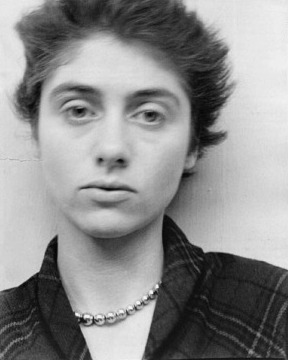
Diane Arbus was an American photographer. She photographed a wide range of subjects including strippers, carnival performers, nudists, people with dwarfism, children, mothers, couples, elderly people, and middle-class families. She photographed her subjects in familiar settings: their homes, on the street, in the workplace, in the park. "She is noted for expanding notions of acceptable subject matter and violates canons of the appropriate distance between photographer and subject. By befriending, not objectifying her subjects, she was able to capture in her work a rare psychological intensity." In his 2003 New York Times Magazine article, "Arbus Reconsidered", Arthur Lubow states, "She was fascinated by people who were visibly creating their own identities—cross-dressers, nudists, sideshow performers, tattooed men, the nouveaux riches, the movie-star fans—and by those who were trapped in a uniform that no longer provided any security or comfort." Michael Kimmelman writes in his review of the exhibition Diane Arbus Revelations, that her work "transformed the art of photography ". Arbus's imagery helped to normalize marginalized groups and highlight the importance of proper representation of all people.

Michio Kaku is an American theoretical physicist, futurist, and popularizer of science. He is a professor of theoretical physics in the City College of New York and CUNY Graduate Center. Kaku is the author of several books about physics and related topics and has made frequent appearances on radio, television, and film. He is also a regular contributor to his own blog, as well as other popular media outlets. For his efforts to bridge science and science fiction, he is a 2021 Sir Arthur Clarke Lifetime Achievement Awardee.

Alex Grey is an American visual artist, author, teacher, and Vajrayana practitioner known for creating spiritual and psychedelic paintings. He works in multiple forms including performance art, process art, installation art, sculpture, visionary art, and painting. He is also on the board of advisors for the Center for Cognitive Liberty and Ethics, and is the Chair of Wisdom University's Sacred Art Department. He and his wife Allyson Grey are the co-founders of The Chapel of Sacred Mirrors (CoSM), a non-profit organization in Wappingers Falls, New York.
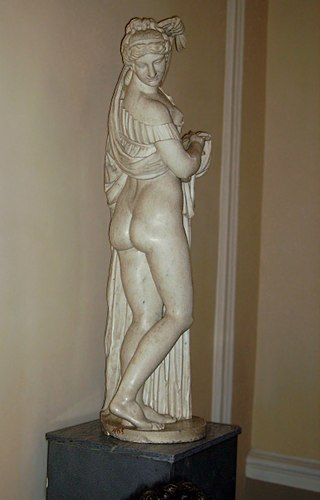
Anasyrma composed of ἀνά ana "up, against, back", and σύρμα syrma "skirt"; plural: anasyrmata (ἀνασύρματα), also called anasyrmos (ἀνασυρμός), is the gesture of lifting the skirt or kilt. It is used in connection with certain religious rituals, eroticism, and lewd jokes. The term is used in describing corresponding works of art.

Lenore "Lee" Krasner was an American abstract expressionist painter, with a strong speciality in collage. She was married to Jackson Pollock. Although there was much cross-pollination between their two styles, the relationship somewhat overshadowed her contribution for some time. Krasner's training, influenced by George Bridgman and Hans Hofmann, was the more formalized, especially in the depiction of human anatomy, and this enriched Pollock's more intuitive and unstructured output.

Richard Avedon was an American fashion and portrait photographer. He worked for Harper's Bazaar, Vogue and Elle specializing in capturing movement in still pictures of fashion, theater and dance. An obituary published in The New York Times said that "his fashion and portrait photographs helped define America's image of style, beauty and culture for the last half-century".
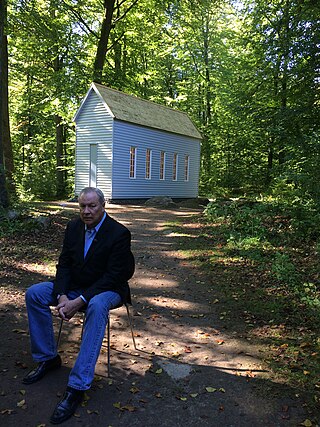
Robert Wilson is an American experimental theater stage director and playwright who has been described by The New York Times as "[America]'s – or even the world's – foremost vanguard 'theater artist.'" He has also worked as a choreographer, performer, painter, sculptor, video artist, and sound and lighting designer.
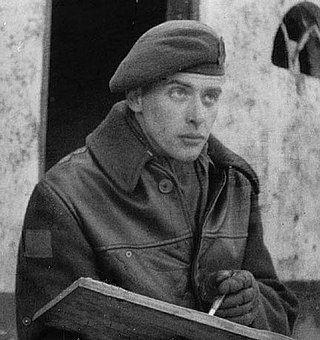
David Alexander Colville, LL. D. was a painter and printmaker who continues to achieve both popular and critical success.

Howard Finster was an American artist and Baptist minister from Georgia. He claimed to be inspired by God to spread the gospel through the design of his swampy land into Paradise Garden, a folk art sculpture garden with over 46,000 pieces of art. His creations include outsider art, naïve art, and visionary art. Finster came to widespread notice in the 1980s with his album cover designs for R.E.M. and Talking Heads.
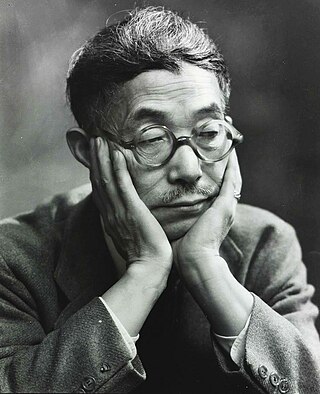
Yasuo Kuniyoshi was an eminent Japanese-American painter, photographer and printmaker in the 20th century.
Daniel Robert Eldon was a British-Kenyan photojournalist, artist and activist, killed in Somalia while working as a Reuters photojournalist. His journals were published posthumously in four volumes by Chronicle Books, including The Journey Is the Destination, The Art of Life, and Safari as a Way of Life.

Satoru Abe is a Japanese American sculptor and painter.
Frank Calloway was an American self-taught artist. Diagnosed with schizophrenia in 1952, he was committed to Bryce Hospital and the Alabama Department of Mental Health in Tuscaloosa. He lived in the Alice M. Kidd Nursing Facility in Tuscaloosa. His imagery was primarily agrarian, depicting the Old American South as he remembered it. He drew on butcher paper using crayons, pen and markers. The scrolls were either 24 or 36 inches high and Calloway made them anywhere from 8 to over 60 feet in length. While he claimed to be 112 years of age in 2008, research by gerontology experts deduced that he was actually born in 1915.

Marjorie Cameron Parsons Kimmel, who professionally used the mononymCameron, was an American artist, poet, actress and occultist. A follower of Thelema, the new religious movement established by the English occultist Aleister Crowley, she was married to rocket pioneer and fellow Thelemite Jack Parsons.
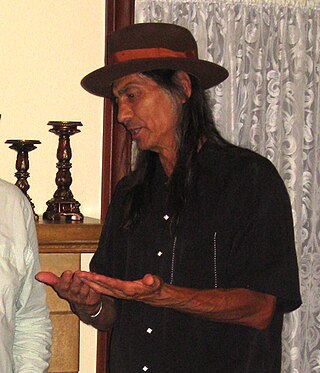
Richard Ray Whitman is a Yuchi-Muscogee multidisciplinary visual artist, poet, and actor. He is enrolled in the Muscogee Nation and lives in Oklahoma.
David Levi Strauss is an American poet, essayist, art and cultural critic, and educator. He is the author of a book of poetry, four books of essays, and numerous monographs and catalogues on artists. He was Chair of the graduate program in Art Writing at the School of Visual Arts in New York City from 2007 until that program closed in 2021. He also taught at the Center for Curatorial Studies at Bard College from 2001–2005, and since 2002 he has continued to teach in the Milton Avery Graduate School of the Arts at Bard.
The Outsider Art Fair or OAF is an international exhibition that features outsider artists who work in a variety of mediums. It is a biannual fair occurring in New York City and Paris, the former taking place in January and the latter in October. Plans were made for a Basel edition in 2018 to run alongside Art Basel, but has since been postponed until further notice.















